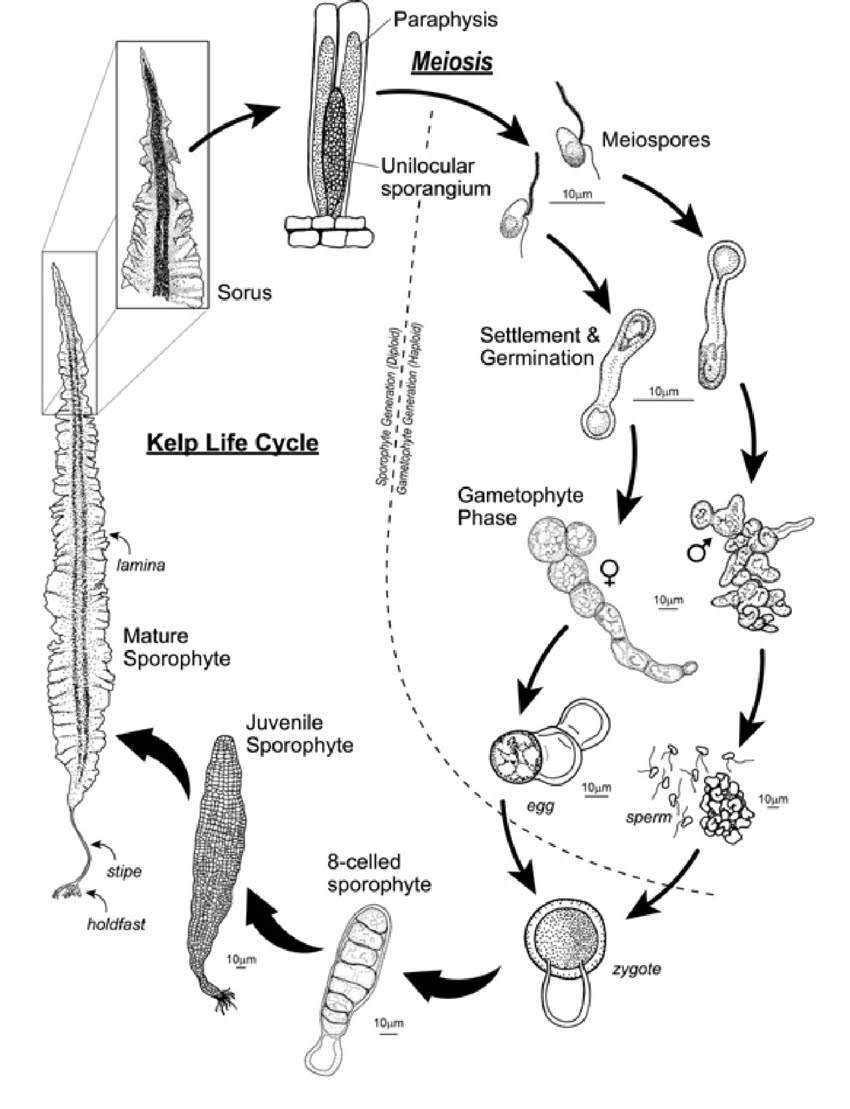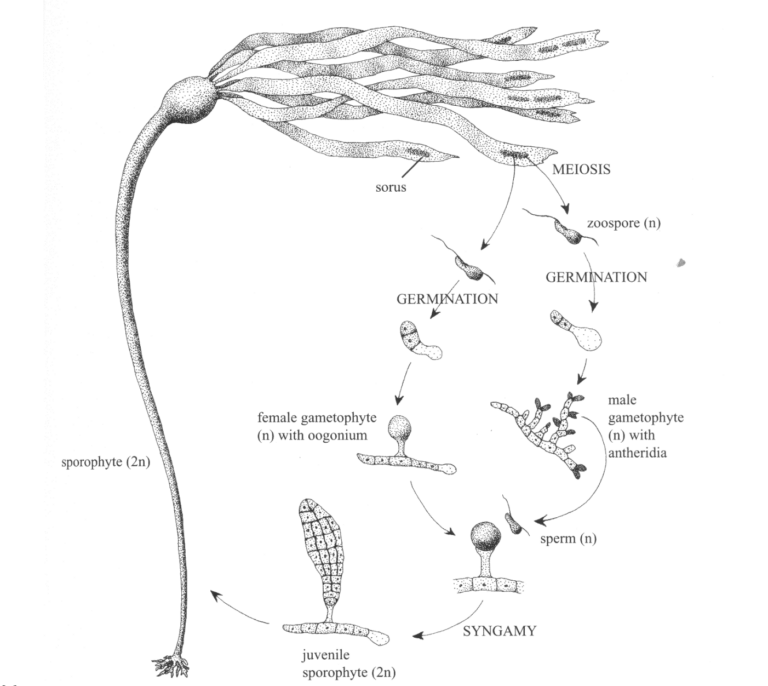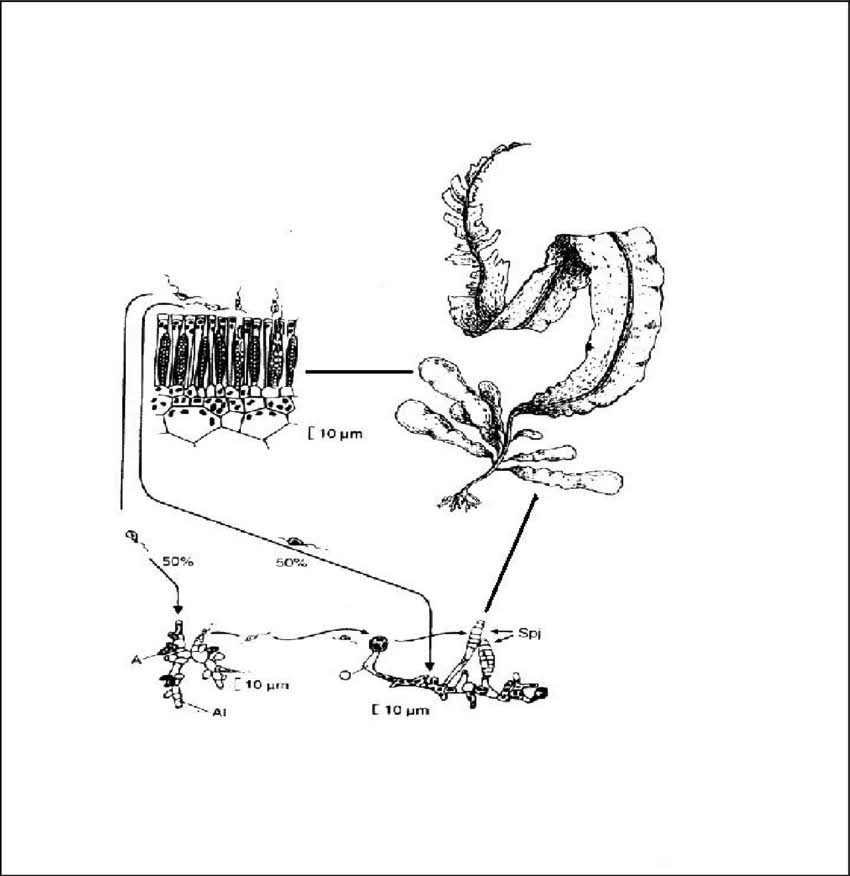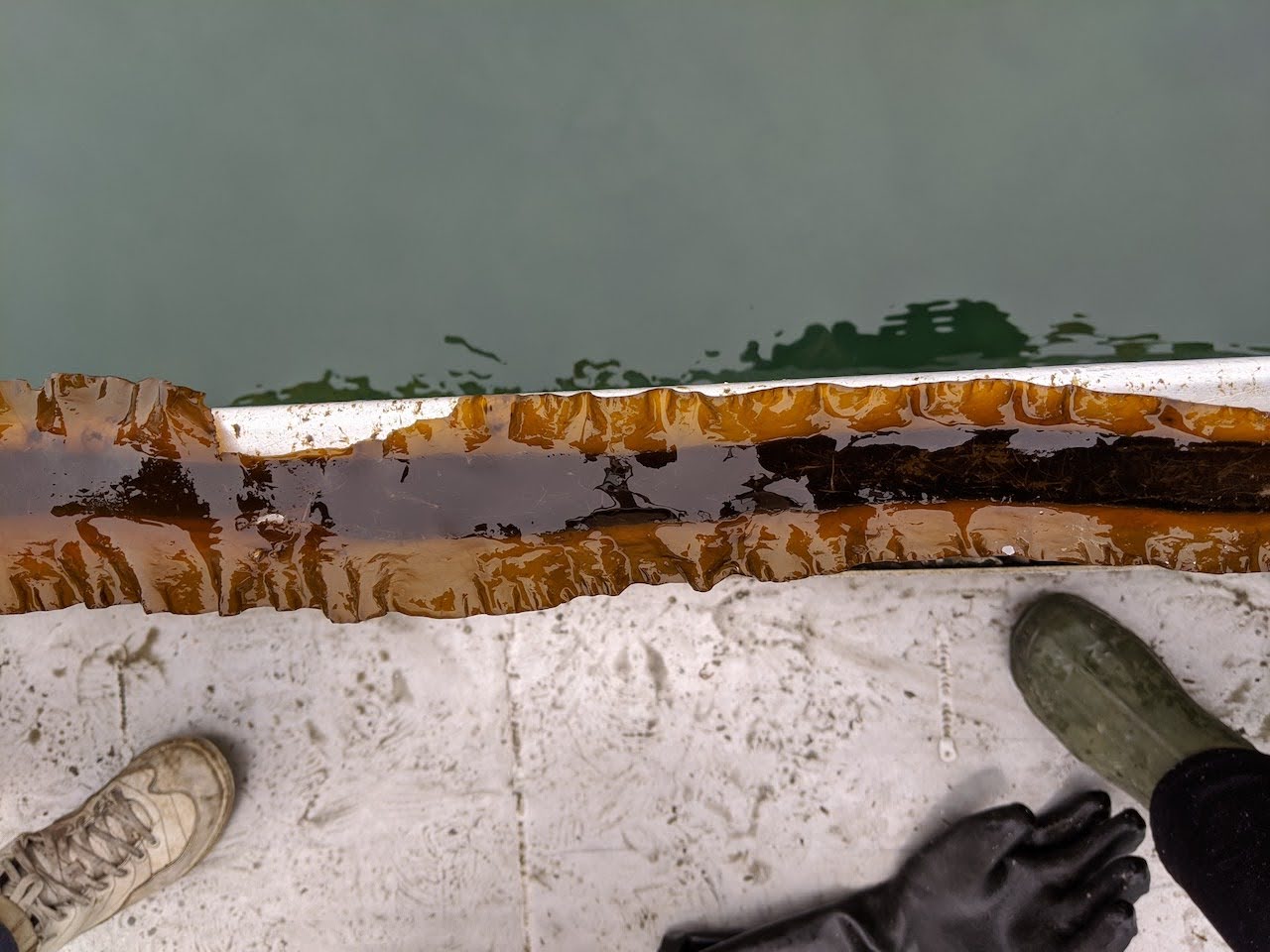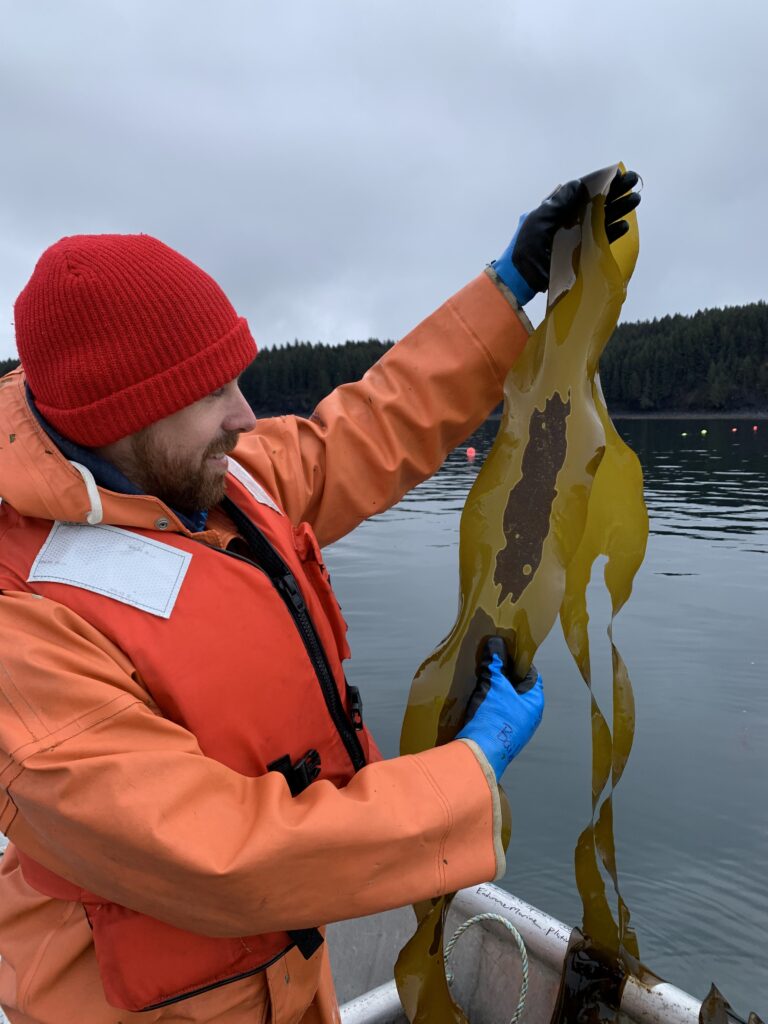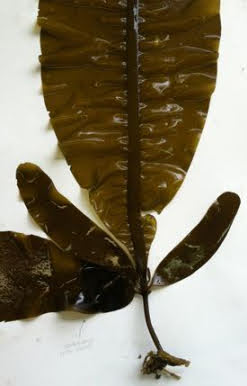Back to: Kelp Culturing 101
Kelps have unique life cycles and means of reproduction, passing through two distinct life stages: the sporophyte phase and the gametophyte phase.
Life Cycles of Different Kelps
In the wild, adult kelp blades will develop sorus tissue at certain times of year. This tissue holds millions of spores that kelp releases into the water column. Even though these three kelp species follow a similar life cycle pattern, their different morphologies result in each species developing their sorus tissue in different ways. Sugar kelp develop dark strips of sorus tissue down their entire blades; bull kelp form a series of sori patches on their blades that easily pop out; and Alaria species form sori on the base of their sporophyll structures near the holdfast.
Sorus Tissue of Different Kelps
The spores that are released from the sorus tissue are able to swim for a short window of time before settling on rocks, gravel, or other substrate on the ocean bottom. There, they will develop into male and female gametophytes that are able to sexually reproduce to form juvenile sporophytes. Those sporophytes will eventually mature into full-sized, adult algae.
Replicating this life cycle in the hatchery
To farm kelp, we take advantage of kelp’s natural life cycle by collecting sorus tissue from the wild and controlling the release of its spores (technically called meiospores) in a lab environment.
Instead of releasing spores into the water column, scientists developed a system to encourage kelp into releasing spores in tanks and tubes so that they settle and grow on specialized string wrapped around plastic PVC spools, like those seen in the photo below, called seed spools. Once the spores settle on the string, they develop into microscopic gametophytes, and eventually juvenile sporophytes that will ultimately grow into full-sized adult kelp.
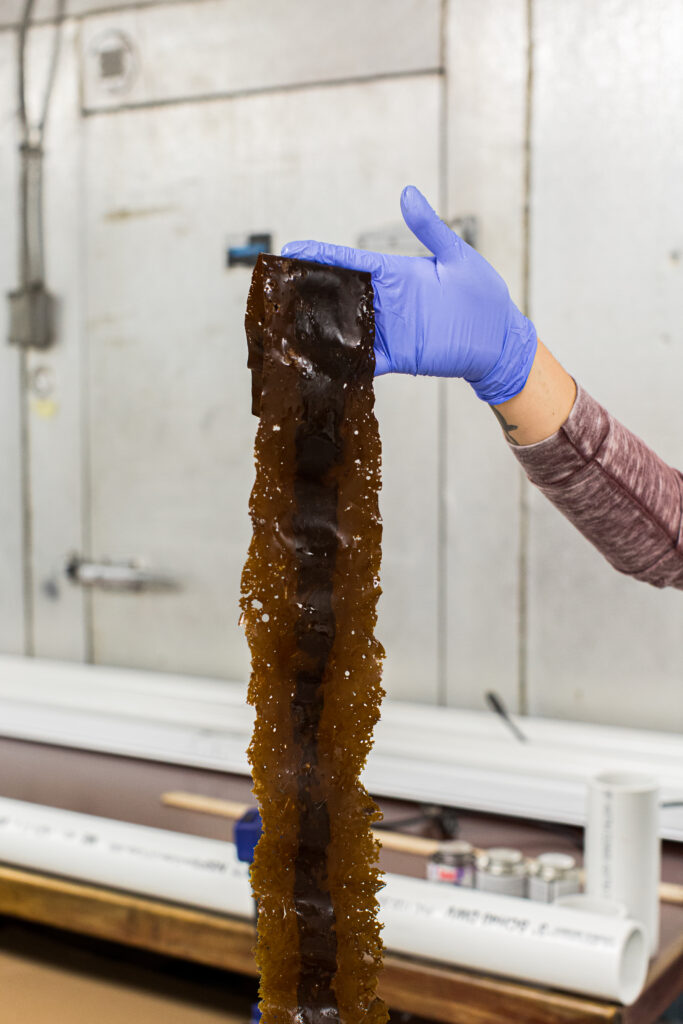
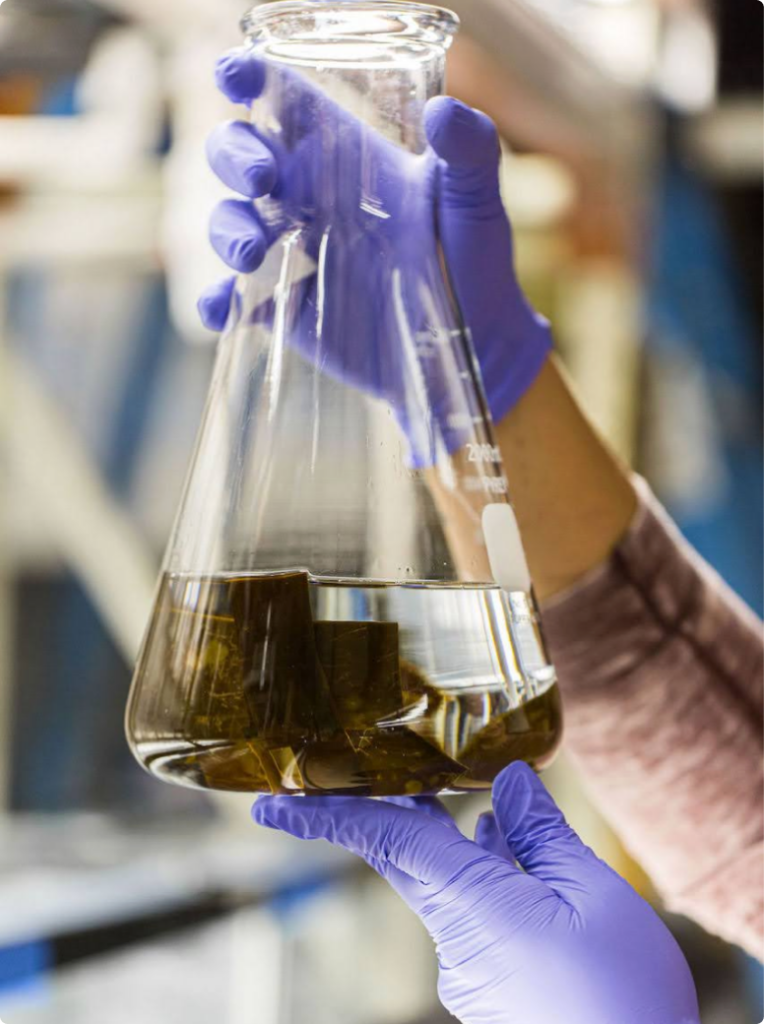
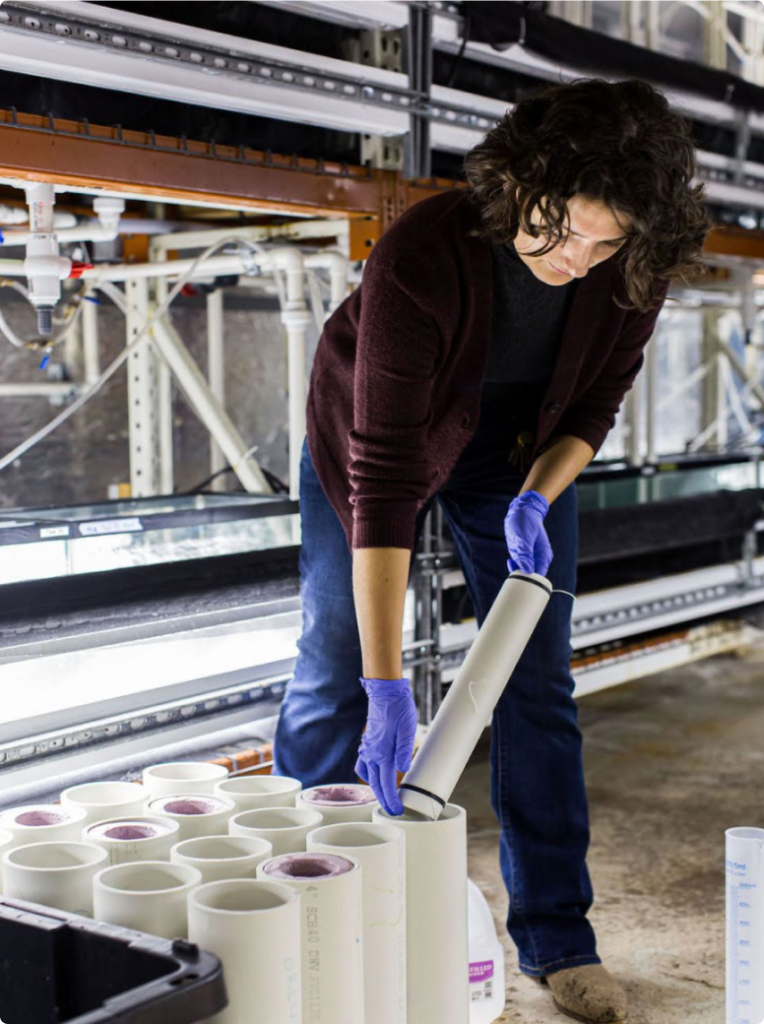
Continue on to the next lesson to learn more about the hatchery process and techniques.
